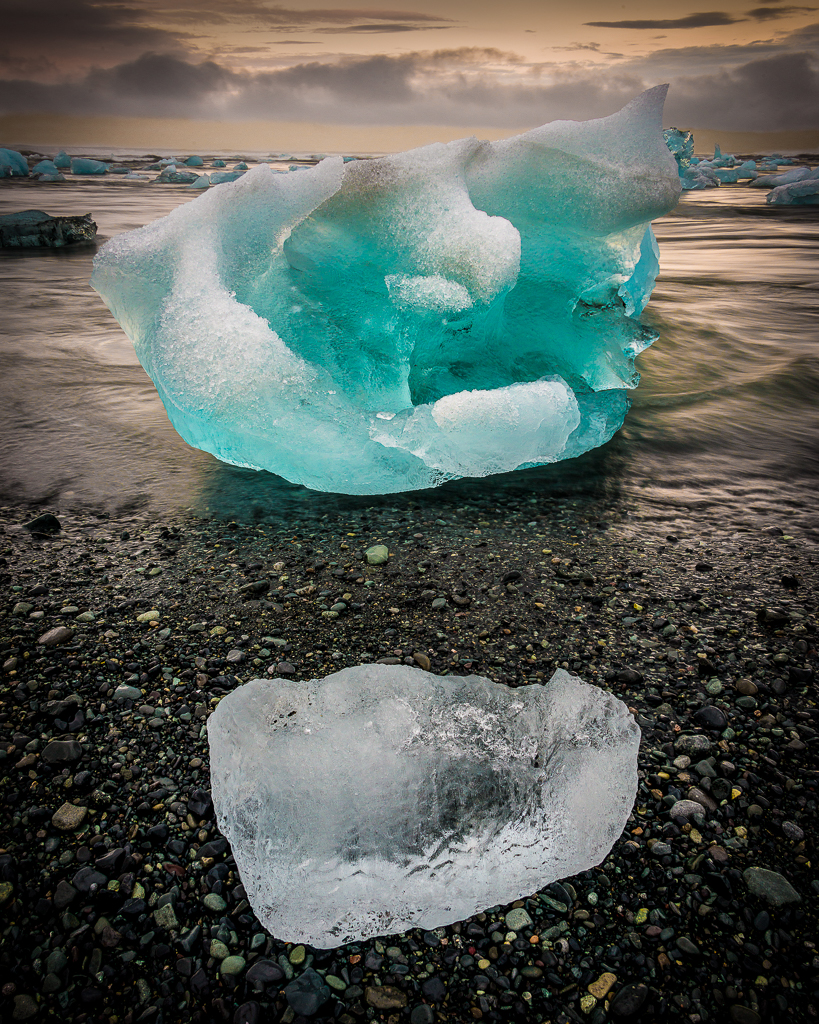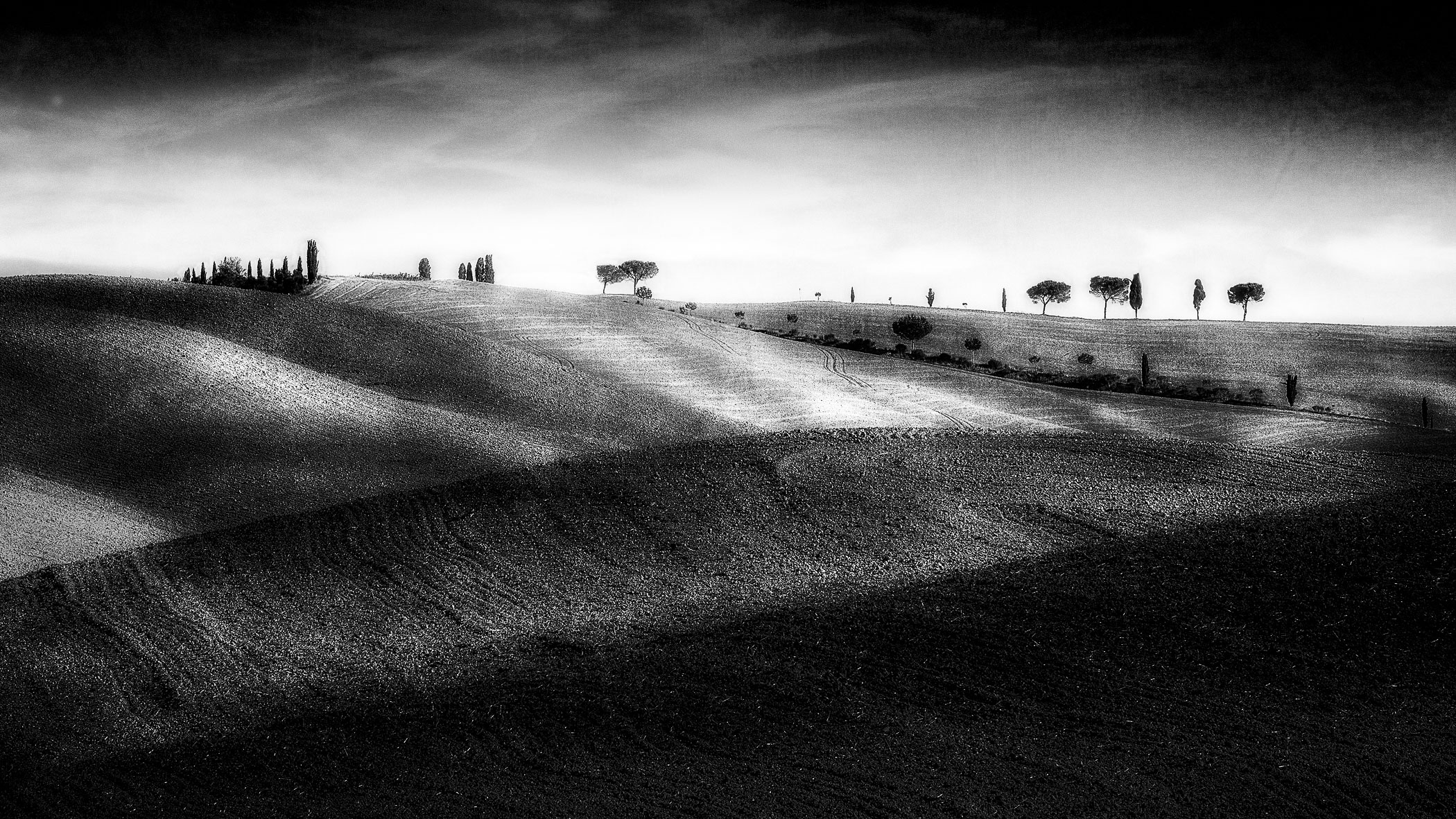“This posting is not just to show you some nice trees. The gist of today’s blog post is ‘emotional transformation’.”
Today, I want to focus on a small, but very famous, group of trees in southern Tuscany. You can find this copse of Tuscan cypress just a bit east of Montalcino, the home of Brunello wines. The basic photo below was taken in late spring and gives you an overall idea of the copse of which I write. But this post isn't really about a stand of trees.
The Cypress Stand
Straight-out-of-the-camera version of the famous copse sitting in a field of wheat
I’ve taken photos of this copse in both the spring and fall. As you will see, the copse and the wheat land surrounding it take on a completely different personality with each season.
This map shows you the exact location, should you want to find this lovely Tuscan cypress copse on your own. Be sure to click on the map image (and any other image) to see a larger view.
Map showing the location of the famous cypress copse
This famous stand of trees actually has a name – “Cipressi di San Quirico d’Orcia – which you know from your high school Italian to be ‘Cyresses of San Quirico d’Orcia". San Quirico d’Orcia a small town just east of these trees in this valley known as Val d’Orcia.
Transformation to Add Emotion
But this post is not just to show you some nice trees. The gist of today's blog post is 'emotional transformation'. Though the photo above is a nice snapshot, it does not appeal to my artistic sense, and it surely doesn't convey my emotional feelings for this stand of cypress.
Beginning the transformation process for this photo, I decide that the sky is a bit too blah for my taste, so I added clouds photographed on some other day. Here is the next iteration of the photo, with clouds that form leading lines to the copse of cypress.
Added clouds to bring focus on the cypress copse
This might have been a good place to stop, however, each time I see this copse, I feel that some mystery surrounds this tight stand of cypress…what’s in there that creates the need to protect these trees from the farmer’s plow? Why is it fenced in? To keep us out? Or is it fenced to keep something in? Since the photo thus far does not express much mystery for me, I chose to express a darker mood. This final version has much more appeal for me on an emotional level. What do you think?
A darker and more emotional rendition
Going back into my archives, I retrieved a photo taken in the fall. The field had been harvested and plowed. Once again, I wanted more than the out-of-the-camera photo, so I worked a bit to create this square version of the photo – I surely do like a square format for many photos, and I think it works well here.
For still more drama, I adjusted the lighting and added clouds that conveyed a late afternoon feel.
And finally, to go even darker, I created a black and white version that transformed day into evening.
From Photo to Painting
Lately, I have been working on my digital painting skills. I have always appreciated the painting arts, but I am not adept at handling all of those gooey tubes of paints, and cleaning up the mess is daunting. With digital painting, I am able to use various ‘brushes’ and techniques to provide you a realistic ‘painting’ from my own photos.
In this first digital paining, I decided to take the liberty to show storm clouds just beyond the horizon, and since the storm has not yet reached us, I brightened up the cypress copse a bit for contrast. I'm imagining how the air will smell after the storm passes.
A storm is coming digital oil painting
And finally, being a fan of Van Gogh, and having just visited the Van Gogh Museum in Amsterdam in April, I tried to emulate his use of bright colors and the swirly strokes for which he is so famous.
My rendition in the style of Van Gogh
Turn Around
Now, if you are photographing this cypress stand, besides the fact that you are most likely among others photographing the same sight, you are looking due south from the edge of the highway. Don’t forget one of the cardinal rules of photography – after you take your photo, turn around to see what is directly behind you. My friend Terry Gipson mentioned this recently. After a long hike to an overlook of the confluence of the Colorado and Green Rivers, he said in a recent blog post...
“The hike back was seeing all the things I missed when I walked out to the overlook…seeing everything as new for the first time.”
So, as I turned around, I found the genesis of one of my favorite Tuscan plowed-field photos.
Here is the view in the fall…
Looking north in the fall
…and here is the view from the same spot in the late spring when the wheat is doing its part in the creation of tasty, rustic, Italian bread, and pastas.
Looking north in the spring
I hope you have enjoyed a few emotive views of my favorite copse of Tuscan cypress. The next time I’m there, I’ll look for you! Until then...
Ciao for now,
Steve





























